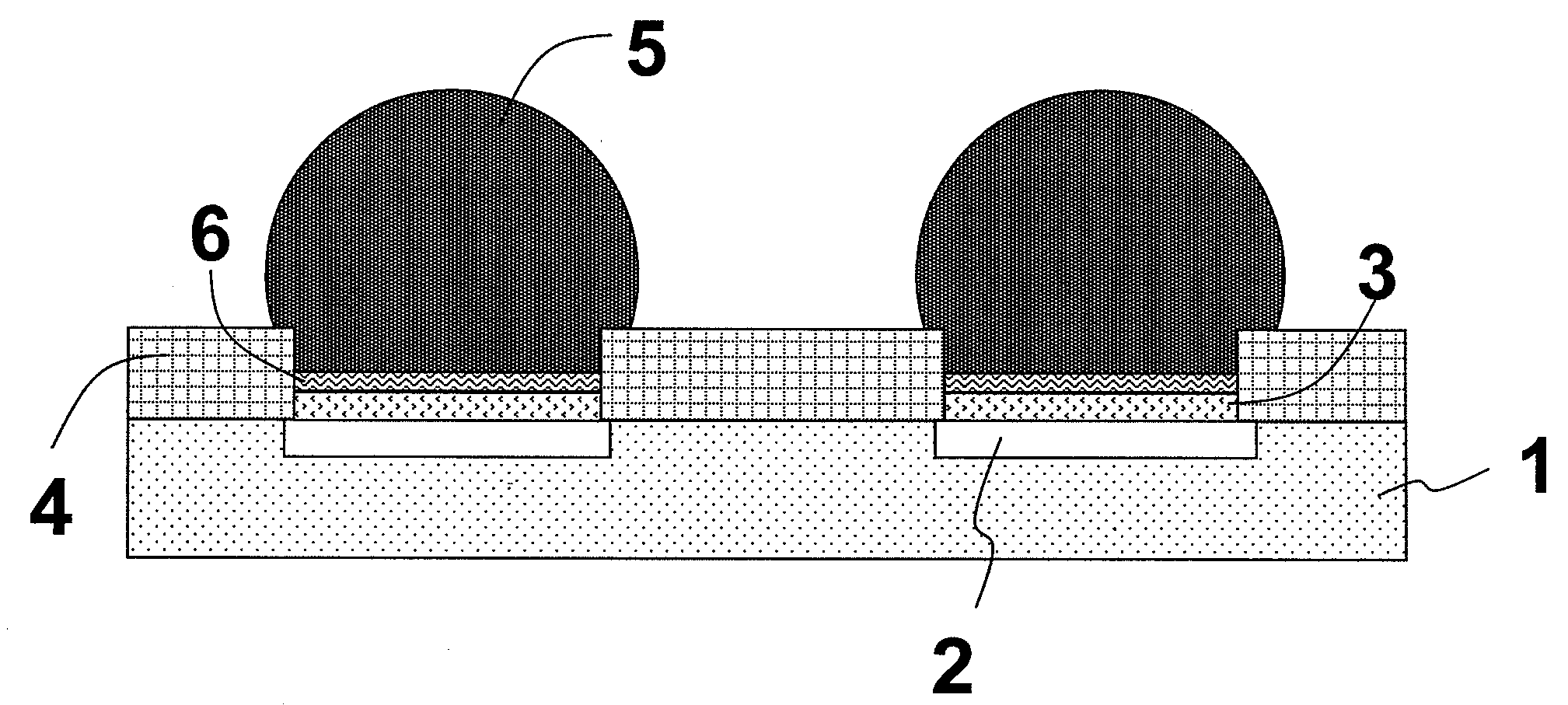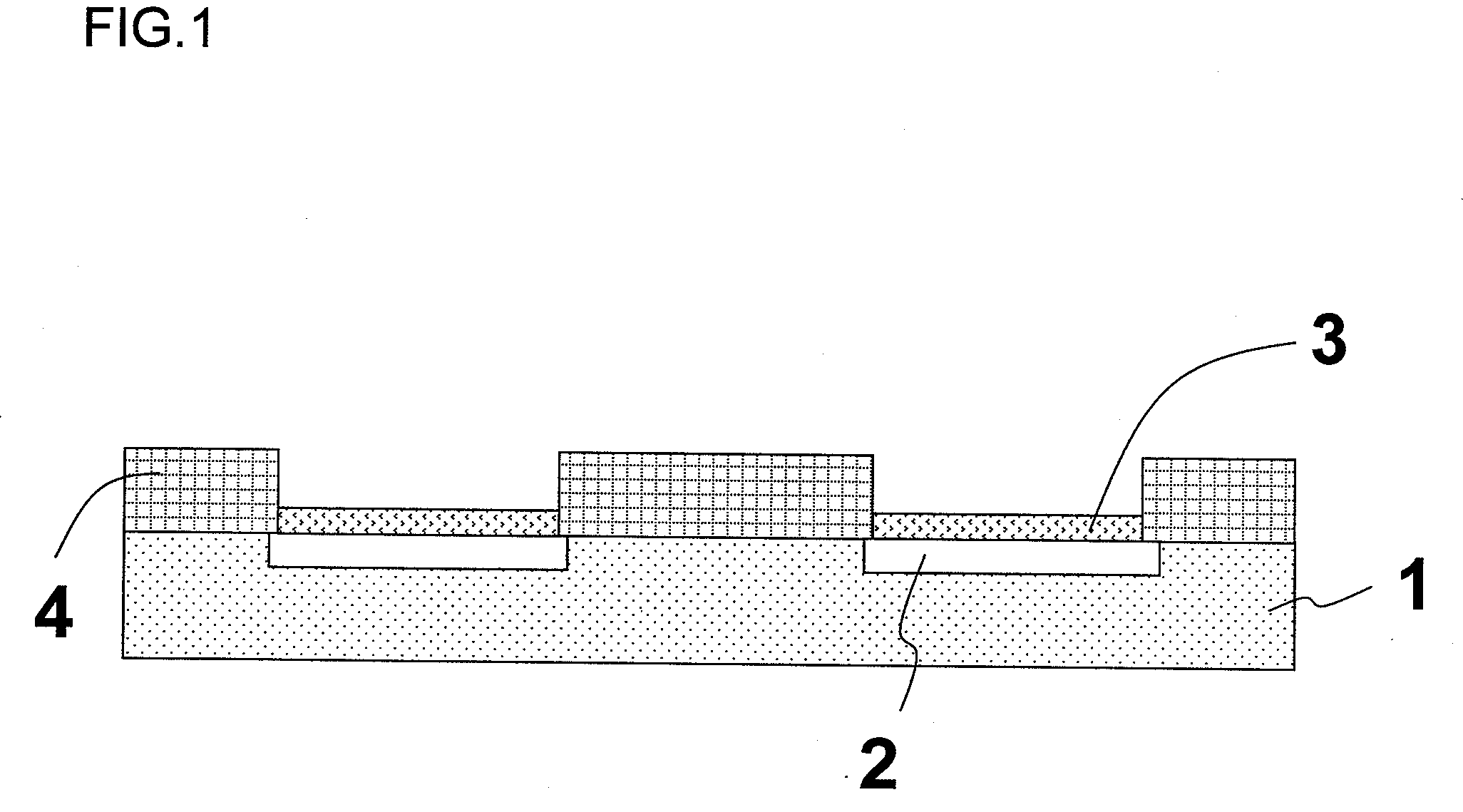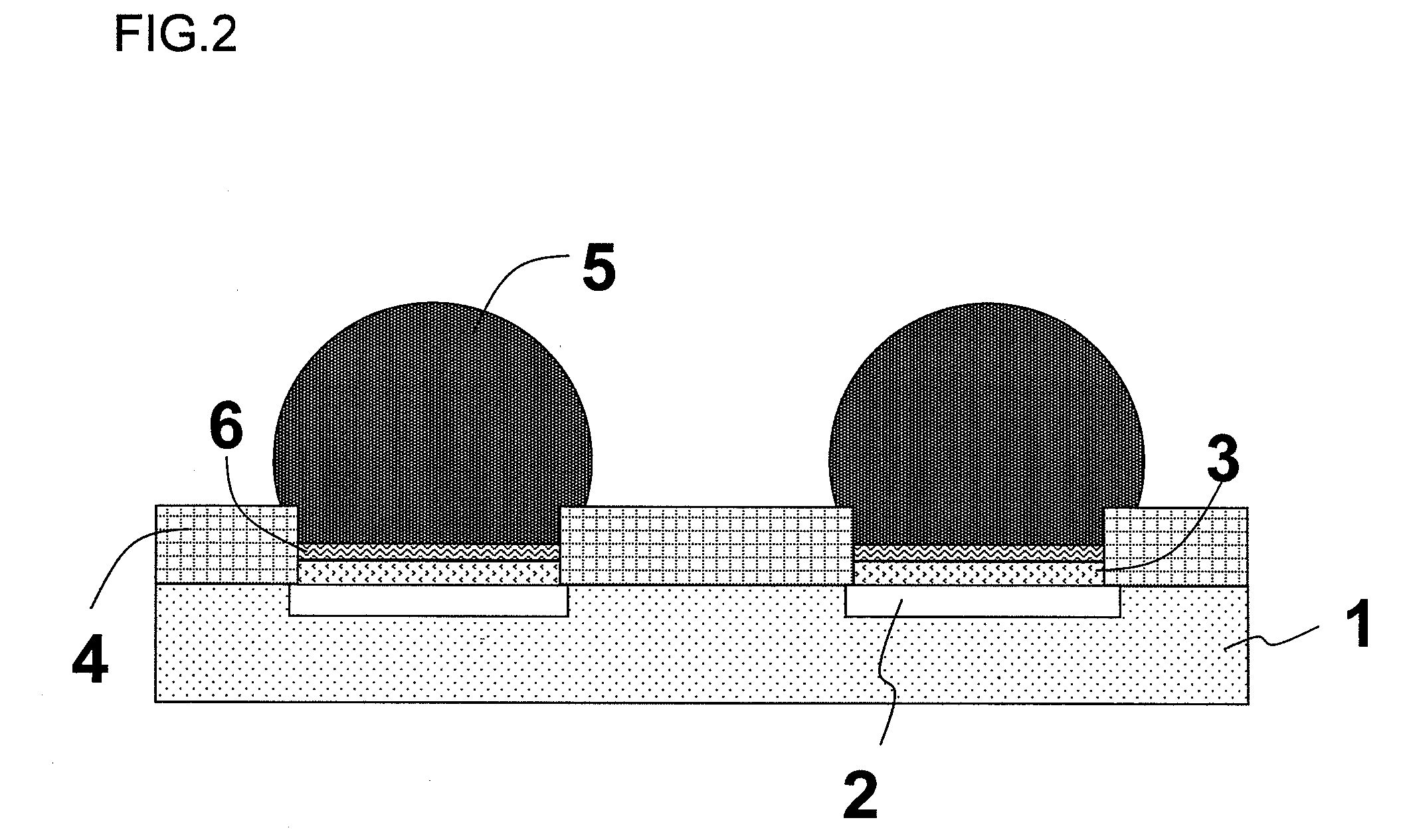Electronic component, semiconductor package, and electronic device
a technology of electronic components and semiconductors, applied in the field of electronic components, can solve the problems of reduced bonding strength, depletion of cu in the solder bump, and increasing the tendency of the alloy layer to fracture, and achieve excellent wettability with solder, high bonding strength, and high barrier characteristic
- Summary
- Abstract
- Description
- Claims
- Application Information
AI Technical Summary
Benefits of technology
Problems solved by technology
Method used
Image
Examples
first embodiment
[0124]As shown in FIG. 1, in an example of an electronic component 1 according to the present invention, a UBM (barrier metal layer) 3 is formed on an electrode pad 2 made of, for example, Al, Cu, and Ag formed on a substrate or a semiconductor element. The electrode pad is electrically connected to a wiring in the substrate or the semiconductor element.
[0125]The UBM 3 has any of the following alloy layers formed at least on the side opposite the side in contact with the electrode pad: (1) a CuNi alloy layer containing 15 to 60 at % of Cu and 40 to 85 at % of Ni, (2) a CuNiP alloy layer containing 15 at % or higher of Cu, 40 at % or higher of Ni, and above Oat % and 25 at % or lower of P, or (3) a CuNiP alloy layer containing 44 to 60 at % of Cu, 29 to 40 at % of Ni, and 8 to 16 at % of P with the content of Ni (based on the number of atoms) being at least 2.5 times the content of P (based on the number of atoms).
[0126]That is, the CuNiP alloy layer (2) needs to contain 15 at % or h...
second embodiment
[0184]An electric component of the present invention may have, in addition to the structure described above, a structure having two or higher layers: an electrode pad 2 made of Al, Cu, Ag, or other elements and a CuNi alloy layer or CuNiP alloy layer 3 with an intermediate layer 9 therebetween, as shown in FIG. 10. In this case, the composition of the top barrier metal layer to be connected to a CuNiSn alloy layer needs to be a CuNi alloy or a CuNiP alloy.
[0185]Examples of the material of the intermediate layer 9 may include Ni, Cu, Pd, Pt, Fe, Co, Cr, and Ti, and NiP alloys, NiB alloys, and CoP alloys containing any of the above metals. The above alloys in the intermediate layer have the following composition:
[0186]NiP alloy: NiP alloy containing 2 to 25 at % of P[0187]NiB alloy: NiB alloy containing 1 to 10 at % of B[0188]CoP alloy: CoP alloy containing 2 to 25 at % of P
One reason of using the intermediate layer 9 is that the adhesion strength between a CuNi or CuNiP alloy layer a...
third embodiment
[0191]Electronic components that have been described in the present invention refer to components in general that form an electric circuit, such as those formed on a printed substrate, a flexible substrate, a ceramic substrate, a glass-ceramic substrate, and a semiconductor substrate, as well as chip capacitors and chip resistors.
[0192]A semiconductor package of the present invention has electronic members electrically connected via UBMs, solder bumps, and the like. Examples of the electronic member may include substrates (such as mother board substrates, interposer substrates, semiconductor packages, printed substrates, flexible substrates, ceramic substrates, glass-ceramic substrate, and semiconductor substrates) and semiconductor chips (semiconductor elements). Examples of connection between such electronic members may include substrate-to-substrate connection, semiconductor element-to-semiconductor element connection, and substrate-to-semiconductor element connection.
[0193]FIG. ...
PUM
 Login to View More
Login to View More Abstract
Description
Claims
Application Information
 Login to View More
Login to View More - R&D
- Intellectual Property
- Life Sciences
- Materials
- Tech Scout
- Unparalleled Data Quality
- Higher Quality Content
- 60% Fewer Hallucinations
Browse by: Latest US Patents, China's latest patents, Technical Efficacy Thesaurus, Application Domain, Technology Topic, Popular Technical Reports.
© 2025 PatSnap. All rights reserved.Legal|Privacy policy|Modern Slavery Act Transparency Statement|Sitemap|About US| Contact US: help@patsnap.com



